0061 What is a category-based nested form?
Thirdness brings secondness into firstness.
A triadic normal context3 brings a dyadic actuality2 into relation with a monadic possibility of ‘something’1.
Here is a picture.
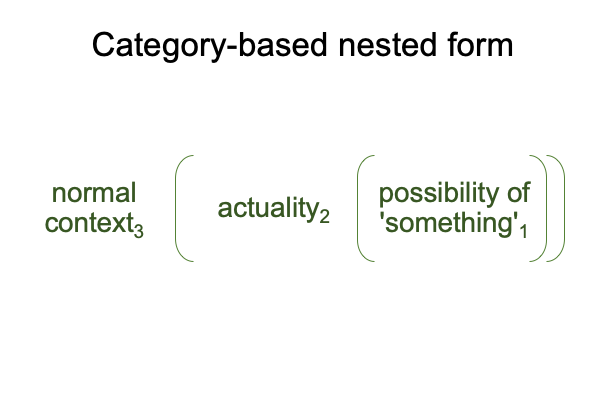
0062 Each category expresses a different logic.
The realm of normal context3 entails the logics of exclusivity, complementarity and alignment.
The realm of actuality2 offers the logics of contradiction (and non-contradiction).
The realm of firstness1 allows contradictions (as long as they cannot separate from one another) and displays the logic of inclusivity.
0063 I have already mentioned that Aristotle’s hylomorphe exemplifies Peirce’s category of secondness. Secondness consists of two contiguous real elements.
Here is a picture of the comparison.
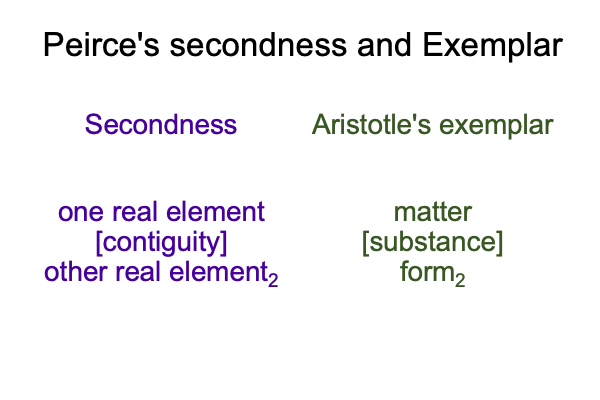
0064 Now, Aristotle’s material causality is confined to Peirce’s secondness. But that is only the beginning. Already, I demonstrated that chemical reactions may be formulated as hylomorphes. All types of causes and effects may be presented as hylomorphes. So, material causation entangles both the matter side of the hylomorphe and the form side.
For another example, hydrogen may be described as molecular material manifesting as a gas, a physical state. If I keep the temperature the same, when I increase the pressure on this gas, its volume will decrease. So, both sides of the hylomorphe are connected with materiality.
For example, the combustion of hydrogen and oxygen may be pictured as the hylomorphe, chemical reagents [change of free energy] chemical products. Material causes may be located in both sides of the hylomorphe. Plus, when free energy is released, chemical reagents (hydrogen and oxygen gases) seem to be like matter and chemical products (gaseous water) seem to be like form. How so? Well, matter enters into form. Matter substantiates form. So, there seems to be a directionality to hylomorphes that depict chemical reactions.
Science embraces material causation.
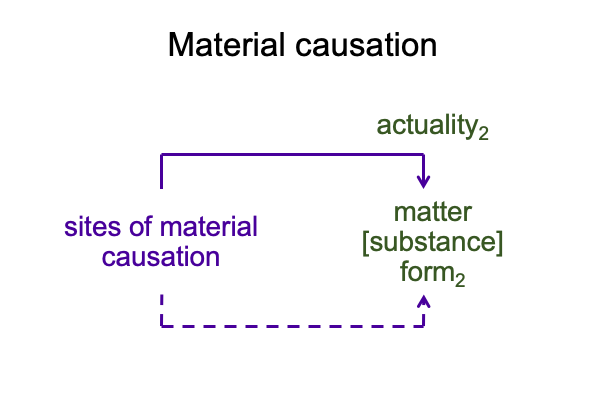
0065 What about formal causality?
Formal causality describes the way that a normal context3 contextualizes its actuality2, as well as the way that an actuality2 conforms to its normal context3. When the actuality2 is portrayed as a hylomorphe2, formal causation touches base with the side of the form2.
Science abhors formal causation, because one cannot observe or measure normal contexts3.
Here is a picture.
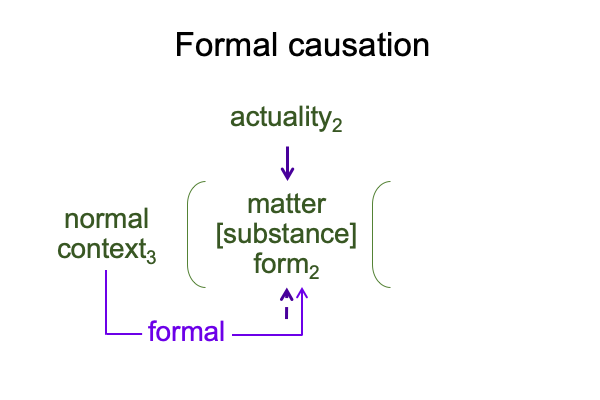
0066 Does this explain why Tabaczek couples material and formal causalities?
Well, these pictures offer a way to appreciate the coupling.
0067 What about efficient causality?
Efficient causality describes the way that actuality2 emerges from (and situates) its potential1. For Aristotle’s hylomorphe, matter has to efficiently substantiate form. If the form is a shape, matter must efficiently fit that shape.
When Aristotle’s hylomorphe broadens to cover the wide variety of causes and effects belonging to Peirce’s secondness, efficient causes become very extensive. Yet, despite the range of efficient causes, they tend to be portrayed as instrumental, physical and immediate. These portrayals emphasize the actuality side of efficient causality. Science retains this side of efficient causality. Science avoids efficient causes that emphasize the potential side of efficient causality, such as chance, malfunctions or delays.
Here is a picture.
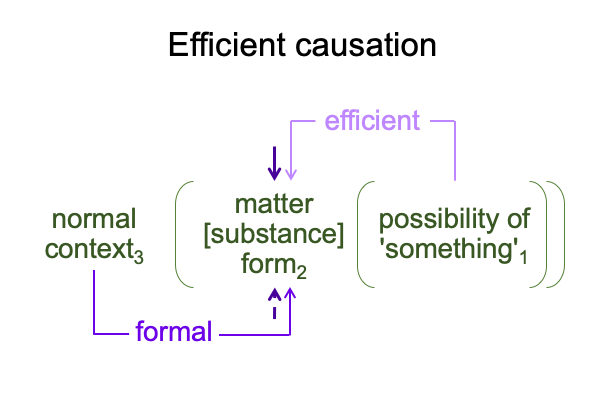
0068 What about final causality?
Final causation describes the way that the entire nested form comes together to satisfy the teleological component of its potential. As such, efficient and final causes should complement one another. Sometimes, a final cause cannot succeed because of lack of means (or instruments for efficient causation). Sometimes, efficient causes are so effective that they mask complementary final causes.
Why do scientists eschew final causation?
Final causes cannot be observed or measured with scientific instruments. However, they can be simulated as “factors” in computer programs. Modern simulations allow scientists to import formal and final causes as factors in mathematical and mechanical models… er… I meant to say, “under the guise of truncated material and efficient causes”.
Here is a picture.
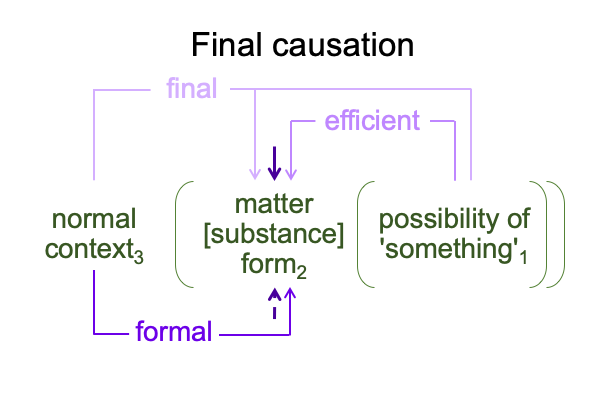
0069 These affiliations between Aristotle’s four causes and Peirce’s category-based nested form are discussed in Comments on Fr. Thomas White’s Essay (2019) “Thomism for the New Evangelization” available at smashwords and other e-book venues. Similar commentaries by Razie Mah are located in the series, Peirce’s Secondness and Aristotle’s Hylomorphism, and in the series, Considerations of Jacques Maritain, John Deely and Thomistic Approaches to the Questions of These Times.
